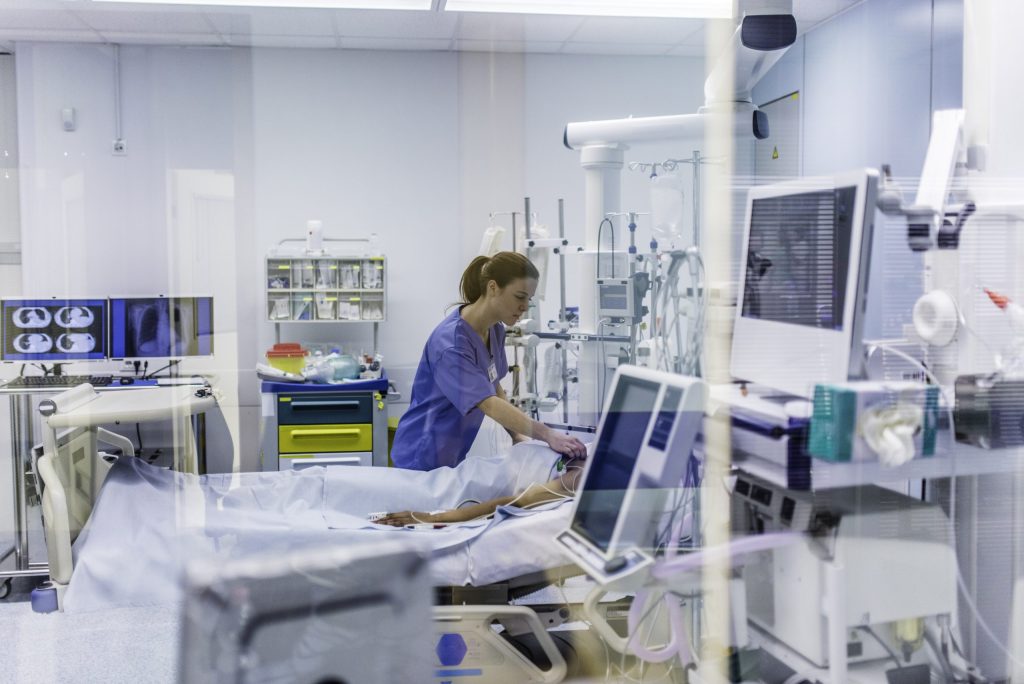Milestones in medical technology, Episode 5: Pneumology

Pneumology deals with diseases of the respiratory tract and is a speciality of internal medicine. The word is derived from the Greek: pneumo = lung, logia = study. In medicine, the subject of pulmonary medicine has received special attention in the last two years through COVID-19.
The history of pneumology begins much earlier, of course. For example, Galenos of Pergamon (129 – 199) already dealt with the pulmonary circulation. Galenos, whom we also know as Galen, was the personal physician of the Roman Emperor Marcus Aurelius (121 – 180) and wrote over 400 texts on medicine, philosophy and ethics. Along with Hippocrates, he is considered the most important physician of antiquity. However, he was wrong with his theory on the pulmonary circulation. The Syrian anatomist and physician Ibn an-Nafis (1210 – 1288) first described the pulmonary circulation in the 13th century. In this so-called small blood circulation, the oxygen-poor blood is led from the right ventricle of the heart via the pulmonary trunk, enriched again with oxygen (O2 ) in the lungs and then led into the left atrium of the heart. Ibn an-Nafis also described the supply of the heart through the coronary vessels without being able to draw on empirical experience.
Pneumology only began to establish itself as a medical specialty in the 20th century. The German Society for Pneumology and Respiratory Medicine (DGP) originated in 1910 as an association of lung hospital doctors. The history of pulmonary medicine in the 20th century was synonymous with the history of tuberculosis (TB) and its control. And although TB can be treated today with appropriate antibiotics, it is still the world’s No. 1 killer infectious disease. 10 million people worldwide contract tuberculosis every year.
Pneumology and medical technology
Milestones in pneumology from a medical technology point of view are devices such as the iron lung, which was developed in 1920 by the American engineer Philip Dincer. The iron lung made machine ventilation of humans possible for the first time; it was mainly used in the acute phase of polio.
The iron lung is not to be confused with the highly complex heart-lung machine (HLM), without which heart surgery would be inconceivable. The HLM replaces the pumping function of the heart for a certain period of time as well as the lung function with the oxygenation of the blood and the elimination of carbon dioxide.
With the onset of the first severe COVID-19 diseases in spring 2020, another high-tech device from pneumology came into focus: ECMO. Extracorporeal membrane oxygenation (ECMO) is a system that partially or completely takes over the patient’s respiratory function. The use of ECMO makes high demands on personnel and technology.
In the course of the Corona pandemic, the so-called spirometry or pulmonary function test (PFT) also receives special attention. In 1844, the British physician and engineer John Hutchinson first developed a device, the spirometer, with which the volume of exhaled air could be measured in cubic centimetres. However, Hutchinson could not measure the important flow rate with his device. Nevertheless, his spirometer became a fundamental instrument in the diagnosis and control of tuberculosis in England. Today, spirometry or spirography is the most commonly used procedure in pneumology to assess lung function. The lung volume, or respiratory volume, and the airflow velocity are measured precisely.
Measuring lung function plays a central role in the diagnosis and treatment of COPD (non-curable, chronic obstructive pulmonary disease), for example. According to WHO estimates, about 600 million people suffer from COPD. Experts estimate that COPD currently ranks third worldwide among all diseases leading to death. For COVID-19 patients (post and long covid) and asthmatics, the results of an accurate lung function test are also of central importance for diagnosis, therapy and follow-up.
Lung function testing should always be carried out at the earliest possible stage of the disease. This is made possible, for example, by highly modern and mobile systems for lung function diagnostics such as those developed and produced by the Swiss company ndd Medizintechnik AG (NDD). With its EasyOne products for lung function testing and spirometry, which are used in over 100 countries worldwide, NDD is a leader in this field. NDD’s mission is to help physicians around the world combat diseases of the lungs and respiratory tract. To do this, this European healthcare champion works with universities, health services, NGOs and lung specialists around the world.
Further information here.